THE FRANCISCAN SPIRITUAL DIRECTORS of the Medjugorje “Seers” have scored a “trifecta”; all three of them have been laicized, excommunicated, or suspended a divinis. Father Tomislav Vlasic was the third spiritual adviser of the Medjugorje “seers” to be suspended from his ministry (2009). The second was, Father Jozo Zovko, who was suspended by Bishop Peric in 2004. Father Iveca Vego holds the infamous dishonor of being the first; he was suspended on Jan. 29 1982, six months after the apparitions began at Medjugorje. Nonetheless, he continued to exercise his priestly ministry in defiance of the Bishop of Mostar. Vego refused to comply until after the Vatican got involved and the other two were implicated on various charges serious enough to warrant suspension and excommunication before the Curia took up Vego’s case in 2009.
l
Father Iveca Vego
According to Bishop Zanic, Father Ivica Vego, a Franciscan priest among the first confidants and spiritual directors of the
"seers", was dispensed from his vows and expelled from the Franciscan Order in January (1982) by his superiors in the
Order of Friars Minor (OFM) after which the bishop appealed to the Vatican Congregation for Religious to have him
reduced to the lay state.
According to Bishop Zanic, eventually Ivica Vego’s behavior, which included persistent and flagrant disobedience and immoral sexual conduct (the seduction and impregnation of a nun named Sister Leopolda) caught up with him.
"By an order of the Holy Father the Pope, he was thrown out of his Franciscan religious order OFM by his General,
dispensed from his vows, and suspended "a divinis".
Nonetheless, like other Franciscan Friars stationed at Medjugorje both before and after him, Vego disregard the canonical sentence and continued to hear confessions and to offer Mass.
Why mention such a distasteful event? The reason: the "seers" claimed that Our Lady appeared to them on thirteen occasions during which she stated in one way or another that Father Vego was innocent, that he was as entitled to celebrate Mass as any other priest, and that the bishop was a harsh overlord. The most egregious aspect of the whole affair is the supposed attitude of the Virgin Mary, who according to Vicka, sided with the disobedient Franciscans.
On December 19, 1981 Vicka wrote in her diary:
“Our Lady said that the bishop is to blame for the disorder in Hercegovina. She also said that Fr. Ivica Vego is not to blame, yet that the bishop has all authority. Our Lady said that he (Vego) should remain in Mostar and not leave.”
On April 15, 1982 Vicka reported that the Virgin stated that Father Vego and another Franciscan priest likewise suspended by the bishop, had the Gospa’s permission to both say Mass and hear Confessions.
“Vicka asked Our Lady a question. ‘Could you generally tell me everything about Ivica Vego and Ivan Prusina?’ Our Lady smiled at the first and then she said: ‘They are innocent.’ She repeated twice that: ‘The bishop has made a mistake . . . let them remain in Mostar . . . they can say Mass sometimes but they should be careful to stay away from attention until things calm down. They have no faults.'”
On April 26, 1982 Vicka stated that Our Lady said:
“The bishop has no real love of God in his heart. Regarding the bishop, may Ivica and Ivan remain calm. What the bishop is doing is contrary to the will of God, yet he can do as he pleases, but one day justice such as you have never seen shall be revealed.”
Then, on January 3, 1982, all the “seers” together asked Our Lady about Fr. Vego. She answered:
“Ivica is innocent. If they expel him from the Franciscan Order, may he remain courageous . . . Ivica is innocent.” She repeated this three times.
Vicka has never denied that the Gospa spoke these words. Their authenticity is confirmed by a cassette recording taped by Rev. Grafenauer SJ during interviews he conducted with Marija and Vicka. Rev. Grafenauer provided copies to the parish of Medjugorje and to the the bishop; he also provided an additional cassette for the Yugoslavian Bishops’ Conference. The cassette contains the following dialogue:
Grafenauer: “You told the bishop that he is to blame and that those two [Vego and Prusina] are innocent and that they can perform their priestly duties?”
l
Vicka: “Yes I did.”l
Grafenauer: “Can they hear confessions? Did Our Lady mention this?”l
Vicka: “Yes”.l
Grafenauer: “If Our Lady said this and the Pope says that they cannot…”l
Vicka: “The Pope can say what he wants, I’m telling it as it is” [Original: Nek Pope govori, kako ja kazem onak jest].l
Grafenauer: “See, this is how one can come to the conclusion that this is not Our Lady… when the Pope says no, they cannot celebrate Mass, and they cannot hear confessions, and then on the other hand, Our Lady says they can do both, this cannot be!”
l
“Vicka: I know what is right [What Our Lady said].”
l
Grafenauer: “This cannot be true. I would put my hand into fire to testify that this is not Our Lady speaking. When a person has a greater gift there also exists a greater danger that the devil could be at work upon this person.”
l
[Ogledalo Pravde. Biskupski ordinarijat u Mostaru o navodnim ukazanjima i porukama u Međugorju (The Diocesan Curia of Mostar on the Alleged Apparitions and Messages of Medjugorje), Mostar, 2001, pp. 22-23]
An excerpt of the dialogue with the “seer”, Marija:
Grafenauer: “Did Our Lady say that the bishop is to blame?”
l
Marija: “Yes”.l
Grafenauer: “Did she say that Vego and Prusina were not to blame?”l
Marija: “Yes”.l
Grafenauer: “When Our Lady says that the bishop is to blame this immediately appears suspicious and we could conclude that this is not Our Lady speaking. The seers are apparently spreading word around that the bishop is to blame”.l
Marija: “Our Lady told us this”.l
[Msgr. P. Žanić, The Truth About Medjugorje, § 12]
To make matters worse, on 21 June 1983 another seer, Ivan Dragicevic, wrote a letter to the bishop, which contained a
warning from Our Lady given during an apparition. Significantly, Father Ivica Vego was present at this apparition as he
often was (He was also present when the Virgin Mary supposedly dropped the baby Jesus, to be examined elsewhere).
Ivan wrote:
“Excellency. These are the thoughts that she (the Virgin Mar) told me: ‘Tell the Bishop that I seek a quick conversion from him towards the happenings in Medjugorje, before it is too late. May he accept these events with plenty of love, understanding and great responsibility. I want him to avoid creating conflicts between priests and to stop publicizing their negative behaviours.’”
l
“The bishop is the spiritual father of all the parishes in Hercegovina. For this reason I seek his conversion towards these events. I am sending my second-last warning. If what I seek does not come about, my judgement and the judgement of my Son await the Bishop. This means that he has not found the way to my Son Jesus.”
Although Vicka remained defiant, when Leopolda became pregnant, they both left the religious life and began to live together near Medjugorje where their child was born. They now have four children. Finally, on October 30, 1984, as mentioned above, Vego was suspended a divinis and reduced to the lay state (by the Vatican Congregation for Religious) and dismissed from the Order (by the General Curia in Rome).
Since Vego was encouraged by the Gospa of Medjugorje to be disobedient (as recorded in the diary of Vicka and statements of the visionaries), by a “Gospa” who continually proclaimed his innocence while also claiming that the bishop was in error; since Vego was encouraged by such a Gospa (who by implication also disagreed with the pope who affirmed his suspension), the question about the authenticity of these messages is becoming increasingly clear. It becomes sharper still with consideration of another confidant of the seers, Father Jozo Zovko.
l
 Father Jozo Zovko OFM
Father Jozo Zovko OFM
Jozo Zovko was born March 19, 1941 in the province of Bosnia and Herzegovina. Medjugorje devotees like to point out that Father Jozo was imprisoned after the supposed apparitions began. Police records, however, reveal a much different story: “Father Jozo, was considered a political enemy not for his support of the seers; rather, he was considered an enemy of the State because of his alleged support for the Croatian Ustasa. Like the condemned liberation theologians of Latin America, many Franciscans, including Father Jozo, were thought guilty of supporting Catholics vigilantes who took up arms in the name of Christ.
Police reports dating back to 1977, well before the beginning of the apparitions, indicate that Father Jozo supported the Croatian “Ustasa while serving as Pastor at Posušje (related documents are quoted in Misterij Međugorja).”
l
Connection between Franciscans and Ustasa Results in State Officials Mistrusting of Franciscans
Before the Communist breakup under M. Gorbachev, Bosnia was a province of Yugoslavia. Yugoslavia was the pearl in an otherwise rusty crown of Communist states. Yugoslavia offered Western consumer goods, exported high quality modern mechanical products including the Yugo automobile, and was a highly desired tourist attraction boasting splendid cities, beautiful mountain lakes, an inspiring coast, and spectacular mountain scenery.
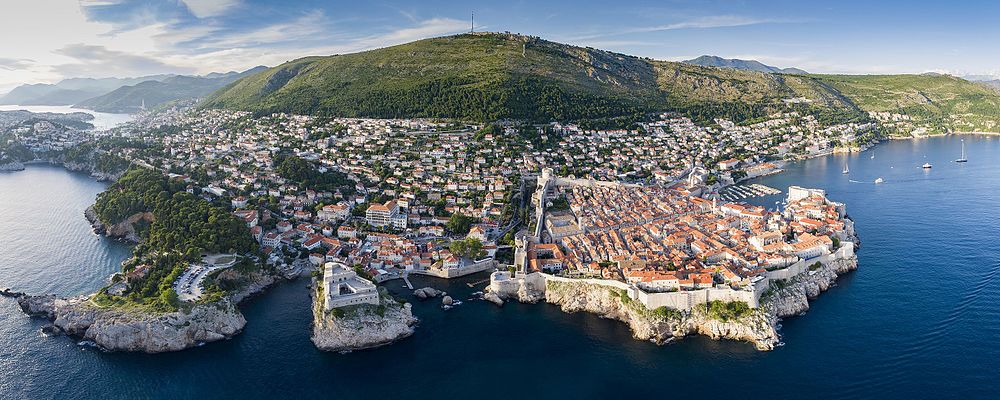
Dubrovnik in Southern Croatia
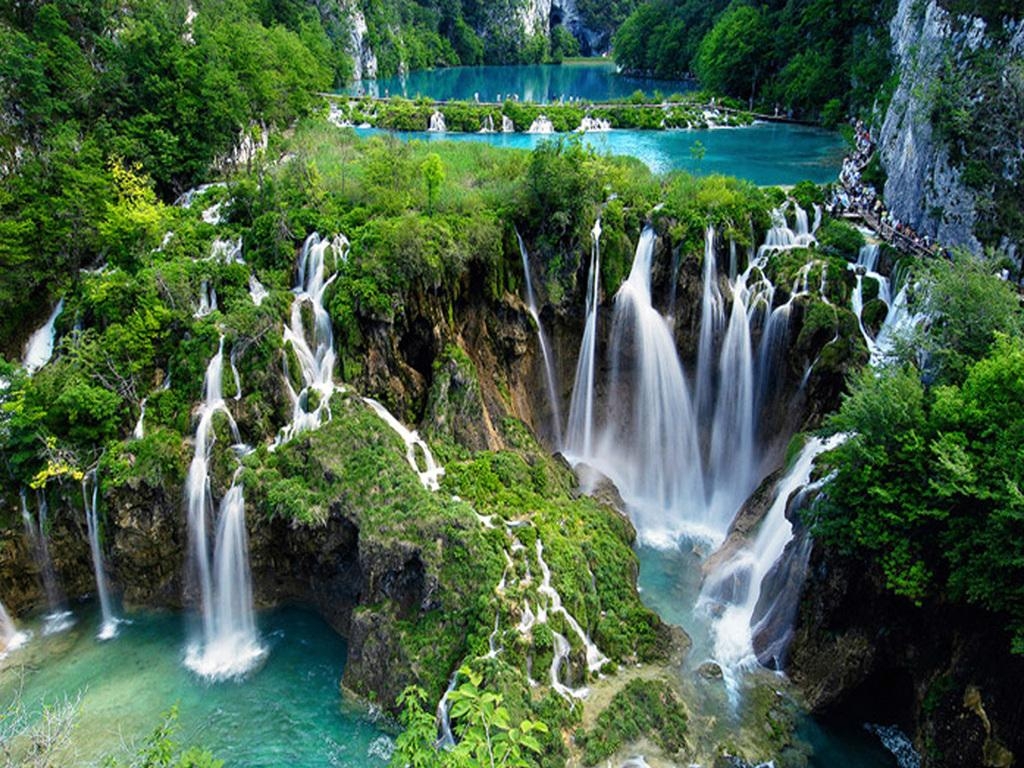
Plitvice Lakes National Park, Croatia
Nonetheless, there was much discontent, esp. in Catholic Croatia where Catholics regularly suffered oppression and heinous treatment at the hands of their Serbian Communist overlords, which sparked a covert nationalist undercurrent known as the Ustasa, a group of Catholic insurrectionists that took up arms against the Communist Government and government officials. Poland, another country situated in Eastern Europe, also faced a hostile Communist regime; however, unlike the Ustasas, the Poles rallied peacefully under the banner of Solidarity, a social movement inspired by bishops and cardinals opposed to violence in favor of peaceful protest fueled by prayer and sacrifice, the traditional Catholic form of resistance ever since the first martyrs peacefully witnessed for the faith and had their blood spilled throughout the anti-Christian Roman Empire. Things were quite different in Croatia where a minority of zealous insurrectionists decided to resolve the issue through more violence. At the center of the turmoil was a small relatively unknown town named Medjugorje, the subject of an intensive study conducted by Dutch sociologist Mart Bax. Bax invested nearly sixteen years researching this small town, which became an international pilgrimage destination sparking unprecedented growth and globalization after it was reported that the Virgin Mary was appearing there.
According to Jonathan Levy, an attorney working for victims of the Ustasa, who reported on Bax’s findings:
‘Medjugorje was a small agrarian hamlet in Herzegovina prior to 1981, notable only for being near the site of a massacre of Serbs by Croats in 1942. The Croats who allied themselves with Nazi Germany took revenge on the Serbs under whose rule the Croats had chafed after WWI. The Croats formed the paramilitary Ustasa organization and with the help of Roman Catholic clergy (like the Franciscan Liberation Theologians of Latin America) sought to purge Croatia and Bosnia of the hated Serbs who were Orthodox Christians. Operating from Medjugorje, the Ustasa rounded up the local Serbs and slaughtered several hundred Serbs disposing of them in a ravine at a place called Suramanci.
It is not the intent of this article to judge the guilt of the Communists, Orthodox Serbs or Croat Catholics, but only to demonstrate that the some Croats were provoked into insurrection by their maltreatment and that their activities were give support by some members of the Franciscan community who should have been counseling peace, prayer, and sacrifice as the bishops of Poland were doing just North of them. Josip Tito’s Communist government was determined to rid Bosnia of what they referred to as the “Ustasa” or “fascist” opposition esp. throughout Croatia, a predominantly Catholic region. By 1957 it appeared that Tito had crushed the Ustasa opposition. However,
“Blood feuds continued in Bosnia. Likewise the Franciscan Order which had openly sided with the Ustasa during World War II, eventually returned to their churches and monasteries….In 1972, the Franciscans built a new church in Medjugorje. By 1981 when the Virgin Mary appeared to six children there, the Franciscans were (also) locked in an administrative dispute with the Bishop of Mostar over control of the village church and their activities.”
l
“Bax reminds us that Bosnia Herzegovina was the locale of 400 years of war between the Turks and Austrians; the area became a checkerboard of separate ethnicities, Serbs, Croats, and Muslims. The founding of Yugoslavia in 1919 did little to quiet the region as the Serbs dominated the government. Croats were discriminated against and formed bands of Ustase, the Serbs retaliated by forming paramilitary bands known as Chetniks. The Second World War turned Bosnia into a huge battlefield where Croats and Muslims aligned with the Germans and fought Serbs and Communist Partisans. The Partisans were victorious and the Ustase eliminated, but by the late 1970’s the Croats including those in Medjugorje were again forming Ustase bands.”
Thus, it is not surprising that Father Jozo was a suspect of the Communist authorities, not for his connection to the seers, but rather for his connection to Catholic nationalists that posed a threat to the Serb dominated Communist government. On October 21, 1981 Vicka appealed to Our Lady to assist Fr. Jozo who was awaiting sentence from the court (the Medjugorje event could easily be interpreted as an anti-Communist ploy with the Franciscans suspected of complicity – it was more likely a financial ploy or part of a Communist plan to subvert the Catholic faith and bring it into line with the evolutionary spirituality of the New Age favored by high adepts in the Communist Party such as L. Breznev and then later M. Gorbachev who favored a one world religion as a central thread of the program to move socialism forward to its next stage of historical development (this complex subject is taken up throughout the pages of Trinitarian Humanism” in which the author discusses the New Age leanings of M. Gorbachev and his affiliation with the New Age Movement), which is NOW unraveling as Medjugorje appears to be. Nonetheless, in 1981, the Gospa of Medjugorje stood with the friars, including Father Jozo. The seers pleaded with her:
“Dear Gospa, I know that you do not have the spirit of vengeance, but try nevertheless to bring certain people to reason, so that they might judge impartially.”
The Gospa responded:
“Jozo looks well and he greets you warmly. Do not fear for Jozo. He is a saint, I have already told you.”
It is hard to understand how the Virgin Mary, the perpetually obedient “Handmaid of the Lord”, could refer to Fra Jozo as a “saint”. In reality this Franciscan was habitually and blatantly disobedient to his superiors and had already been suspended three times, a first time by bishop Zanic on August 23 1989 (diocesan letter Nr. 622/89) and a second time by bishop Peric on June 14, 1994 (diocesan letter Nr. 423/94).
Here is a list of disciplinary actions taken against Jozo Zovko through 2009 (for more detail visit Official Documents of Medjugorje):
August 23, 1989 Fr. Jozo was suspended by Bishop ZaniclJozo refused obedience and appealed to the Congregation for the Evangelization of the Peoples. The Congregation confirmed his suspension (Feb 15, 1990) and requests he domicile in a convent far removed from Medjugore.ll
Jozo refuses to comply.
July 25, 1991 The Franciscan Provincial of Hercegovina requests the Bishop Zanic to transfer Jozo to the convent of Siroki Brijeg, less than 30 miles from Medjugorje.lThe bishop rejects the request.lNonetheless, Jozo shows up in Siroki Bijeg. Despite protests from Bishop Zanic, Father Jozo continued to administer the Sacraments in Siroki Brijeg.
August of 1993 Bishop Peric is installed as the new bishop of Mostar and Jozo remains non-compliant and insubordinate.
November 11, 1993 The Congregation for the Evangelization of the Peoples contacts the Minister-General of the Franciscan order and confirms Jozo’s suspension; nonetheless, Jozo continued to boldly exercis his priestly ministry within the vicinity of Medjugorje.
December 29, 1993 the Franciscan Province of Hercegovina informs bishop Peric that Jozo has been appointed as a Parish Administrator in Siroki Brijeg. The bishop responds and expresses his bewilderment. Seven months later, the bishop undertakes a canonical visit to Siroki Brijeg and finds out that Jozo is hearing confessions in spite of his suspension. Two days later the bishop formally suspends Jozo again according to Canon 1378, par 2. and notifies his Superior in the Franciscan Order. Jozo disregards the suspension.
June 11, 1998 During his ad limina-visit to Rome, Bishop Peric informs the Holy See of the situation.
2002 The Franciscan Provincial in Medjugorje promotes Jozo to Medjugorje devotees as a “devout priest” who “on invitation gives spiritual retreats on the island of Jakljan and in Medjugorje.” The provincial was bold enough to make such licit public promotions while failing to mention anything about Jozo’s suspension or irregular status.
June 26, 2004 Bishop Peric suspends Jozo for a third time on account obstinate disobedience. The bishop invites Jozo to the diocesan Curia to present him with documents detailing his unauthorized and illegitimate pastoral activities and others related to his ‘moral’ life.lJozo again refuses to obey.
February 9, 2009 Jozo’s personal assistant, Vesna Cuzic, informs all Medjugorje devotees, that Jozo will be unavailable for spiritual direction for the remainder of the year due to a need for convalescence while renovating buildings on the island of Badija-Croatia.
St. John of the Cross asserts that Our Lord “through His public revelation, has given all that is needed for salvation.”
“We must suspect those apparitions that lack dignity or proper reserve, and above all, those that are ridiculous. This last characteristic is a mark of human or diabolical machination.”
The priests advisors and spiritual confidants of the supposed seers certainly present a host of problems for Medjugorje. Their disobedience is a hallmark of willful pride and fraudulent practices. The children have been caught in numerous prevarications, and they, both priests and seers, implicate Our Lady in their designs making her to be the cause of their disobedience, which, according to the seers themselves, was supported by Our Lady even in the face of ecclesial pronouncements by both bishops and the Pope himself.
The theme of disobedience, sexual aberrance, and a new wrinkle – cultic New Age Spirituality – will be examined in Article Six wherein another Franciscan Friar, Spiritual Director, and Confidant of the “seers”, Father Tomislav Vlasic, is examined for all three of these transgressions.
In closing it is well to remember that Our LADY IS QUEEN MOTHER” OF THE “NEW ISRAEL”, A POWERFUL POSITION FROM WHICH SHE INTERCEDES FOR GOD’S PEOPLE AND DISPENSES GRACE NECESSARY FOR SALVATION AND SANCTIFICATION, SHE HAS NOT HOWEVER BEEN ENTRUSTED WITH THE POWER OF THE KEYS, THAT POWER HAS BEEN ENTRUSTED SOLELY TO PETER AND THE BISHOPS IN UNION WITH HIM.
l
Go to Article Six: Tomislav Vlasic Laicized Medjugorje Spiritual Guide & New Age Master of “Manipulation”

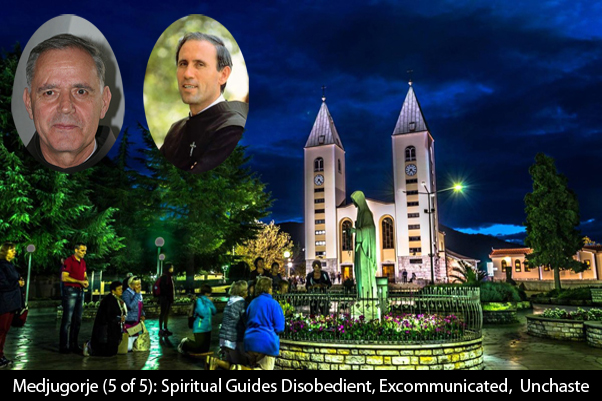


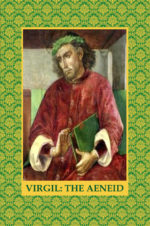
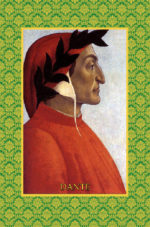


How you can still describe Yugoslavia as a ‘pearl’ in the communist world despite the fact that it was still a country ruled by a repressive Godless regime, which persecuted the church. Whether they were western or eastern leaning is irrelevant.
Whilst there are extreme groups in any nationality, most Croatian Catholics also endured Communism in a peaceful passive manner. To equate all or most Croats (predominantly Catholics) as Ustashe is offensive and simply a perpetuation of the Yugoslav Communist & Greater Serbia propaganda.
You can see through the deceit of the so called seers yet you are blind to anti catholic disinformation. I am disappointed.
By saying it was the pearl of the “Communist World” implies that it was a Communist showcase for atheism, materialism, etc. and also a bastion of natural beauty and some modicum of wealth that helped communism to glitter with a false glow – this is what is meant by “show case for communism”. The article did not say showcase for human rights or the dignity of man etc. So, on this pt, we actually agree.
We did not say all Catholics nor even most, we mentioned only the minority of Ustathe nationalists – I think we are on the same page here too.
I will review the article again, but i do not believe that anywhere is it mentioned that “all” Croats were Ustatshe.
It does sadden me to be accused of spreading Serb Propaganda, not my intent – i do see it, that is why we added a disclaimer whereby the focus was kept on those Franciscans who supported the Ustashe. You can find this sentence in the article:
“It is not the intent of this article to judge the guilt of the Orthodox Serbs or Croat Catholics, but only to demonstrate that the Croats were provoked into insurrection with the support of the Franciscans who should have been counseling peace, prayer, and sacrifice as the bishops of Poland were doing just North of them.”
We are talking about the Franciscans and the relationship to liberation theology NOT the propaganda, which is clear to me. Bax’s research however on the pt of Medjugorje and the Franciscans helped advance the theme of the article.
Yes, there are serious issues with the Orthodox, esp. in this part of the world, but again, that was not the focus and the disclaimer i had hoped would handle that.
Thanks for your astuteness Georgius.
Its very awesome article,all the content is so beneficial and valuable for us.presentation of article is very good,so I will bookmark it for sharing it with my friends.Thanks for sharing nice and pretty post.